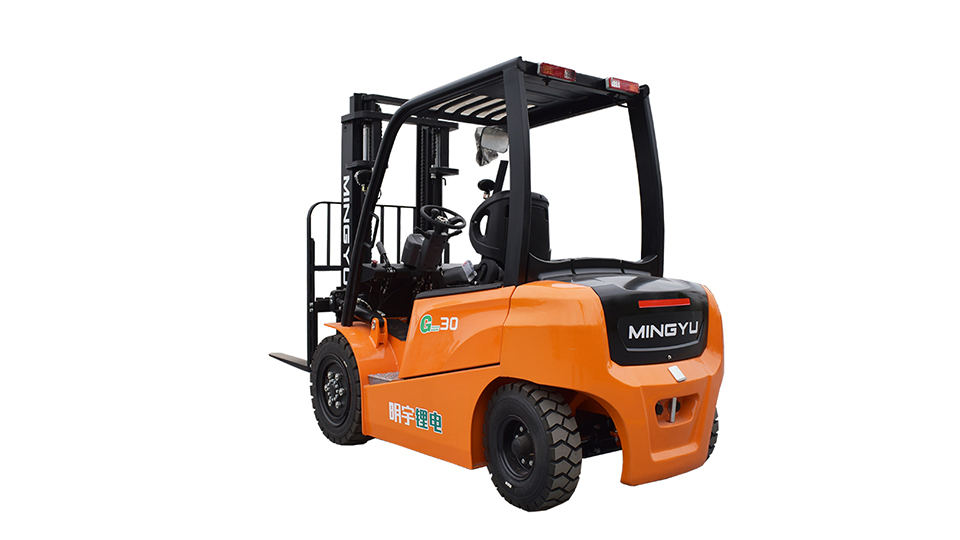
Electric forklifts are critical in warehouses and industrial settings for their efficiency and zero-emission operation. A persistent question among operators is whether these forklifts can recharge their batteries autonomously—without external chargers or “jumps” akin to internal combustion vehicles. This article unpacks the science behind forklift battery operation, dispels myths, and clarifies the role of regenerative systems in extending battery life.
1. Understanding Electric Forklift Batteries
Electric forklifts rely on two primary electric forklift for sale battery types: lead-acid and lithium-ion. Neither can “recharge itself” in the traditional sense, but their operational dynamics differ significantly.
A. Lead-Acid Batteries
Chemistry: Lead plates submerged in sulfuric acid produce energy through reversible chemical reactions.
Charging: Requires external chargers to reverse discharge by replenishing sulfur ions on the plates.
Self-Discharge: Loses ~3–5% capacity weekly when idle; no energy recovery without input.

B. Lithium-Ion Batteries
Chemistry: Lithium ions move between electrodes during charge/discharge cycles.
Charging: Needs dedicated chargers; no self-recharge capability.
No Memory Effect: Can be charged at any state of charge without degradation.
2. Regenerative Braking: Energy Recovery vs. Recharging
Modern electric forklifts often include regenerative braking systems, which convert kinetic energy into electrical energy during deceleration.
How It Works:
When brakes are applied, the motor acts as a generator, feeding energy back to the battery.
Energy Recovery: Captures ~10–20% of energy in stop-and-go operations, extending run time slightly.
Key Limitations:
Not True Recharging: Regenerated energy offsets usage but doesn’t fully recharge the battery.
Capacity Dependent: Lithium-ion batteries recover energy more efficiently than lead-acid.
3. The Myth of “Self-Charging” Batteries
No commercially available electric forklift battery recharges autonomously. Misconceptions arise from:
A. Surface Charge Phenomenon (Lead-Acid)
After resting, lead-acid batteries briefly show higher voltage (~12.6V from 12.2V) due to surface charge.
False Recharge: This dissipates quickly under load and requires full charging.
B. Hybrid Forklifts
Hybrid models (e.g., diesel-electric) use combustion engines to generate electricity, but these still depend on external fuel, not autonomous battery charging.
4. Charging Infrastructure Essentials
All forklifts require external chargers tailored to their battery type:
A. Lead-Acid Chargers
Cycle Charging: Applies constant current/voltage over 8–12 hours.
Equalization Charging: Monthly deep charge to balance cell voltages.
B. Lithium-Ion Chargers
Smart Chargers: Adjust voltage/frequency dynamically; reduce charging time to 4–6 hours.
Opportunity Charging: Quick top-ups during breaks (not full cycles).

5. Operational Impact on Battery Longevity
Proper charging practices prevent premature failure:
A. Avoiding Deep Discharges
Lead-acid: Discharges >80% reduce lifespan by 50%.
Lithium-ion: Tolerate deeper discharges but degrade faster with high discharge rates.
B. Temperature Sensitivity
Extreme heat (>45°C) or cold (<0°C) halts charging until stabilized.
6. Future Innovations in Battery Tech
Emerging technologies aim to enhance energy efficiency:
A. Solid-State Batteries
Higher energy density and faster charging, but commercialization remains experimental.
B. Kinetic Energy Storage
Systems like flywheels store regenerative energy mechanically, but adoption in forklifts is limited.
7. Practical Tips for Maximizing Uptime
Schedule Charging: Follow manufacturer guidelines for depth-of-discharge cycles.
Monitor Health: Use telematics systems to track state of health (SoH) and temperature.
Invest in Smart Chargers: Optimize charging efficiency and battery lifespan.
Conclusion
Electric forklift batteries cannot recharge themselves without external power sources. While regenerative braking recovers small amounts of energy, full recharging mandates dedicated chargers. Understanding battery chemistry and maintenance practices is crucial for operational efficiency. As lithium-ion adoption grows, advancements in fast-charging and energy recovery may redefine autonomy—but true self-recharging remains a distant prospect.
Name: selena
Mobile:+86-13176910558
Tel:+86-0535-2090977
Whatsapp:8613181602336
Email:vip@mingyuforklift.com
Add:Xiaqiu Town, Laizhou, Yantai City, Shandong Province, China